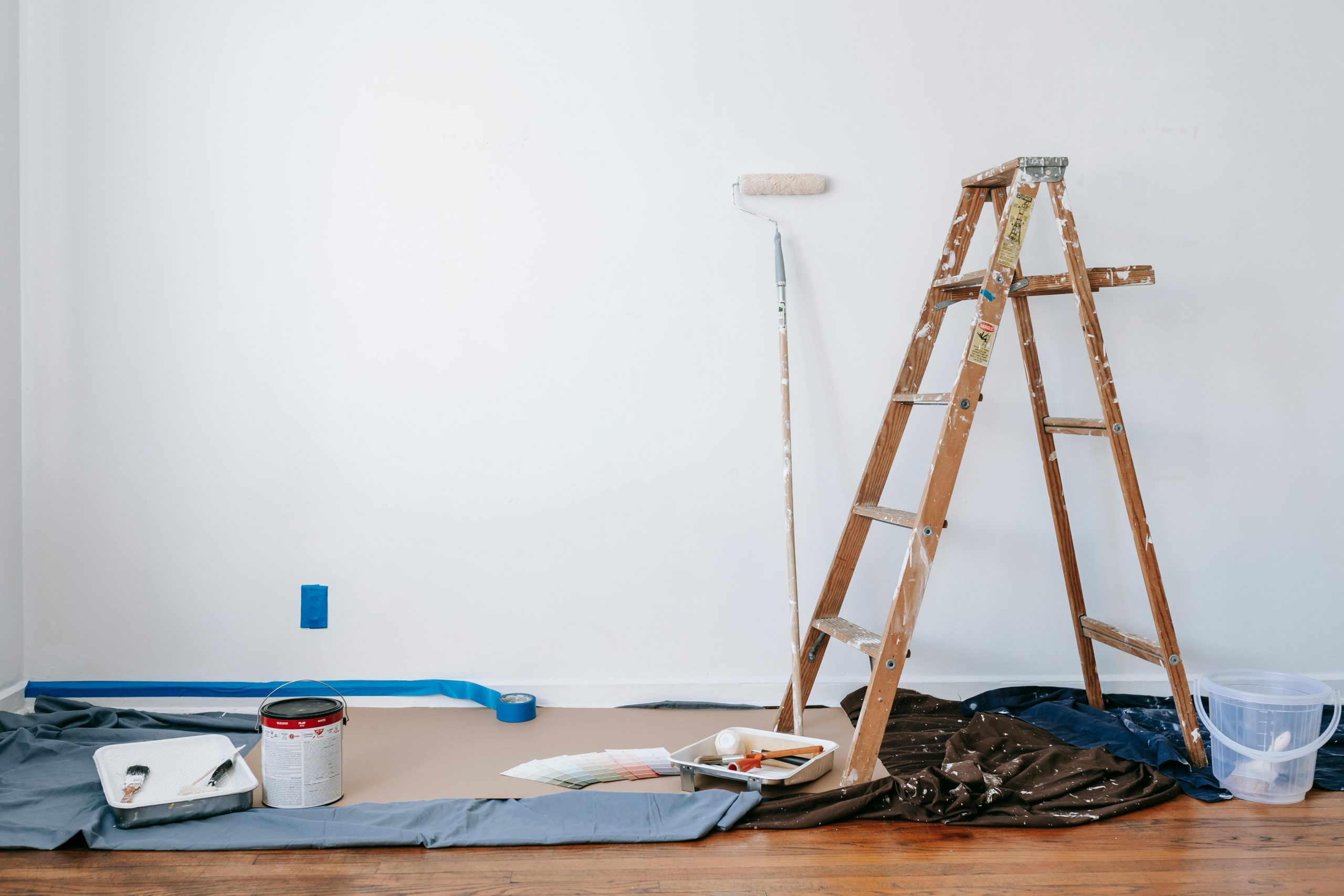Painting the interior of your home can be an exciting and rewarding project. Whether you’re looking to refresh a room with a new colour or completely transform your living space, a fresh coat of paint can make a significant difference. To help you achieve professional-looking results, here are some essential tips and tricks for painting the interior of your house.
1. Choose the Right Paint
Selecting the right paint is crucial for achieving the desired finish and durability. Here are some key points to consider:
- Finish: Choose a finish that suits the room’s purpose. Flat or matte finishes are great for low-traffic areas and ceilings, while satin or eggshell finishes are ideal for living rooms and bedrooms. For high-traffic areas like kitchens and bathrooms, semi-gloss or gloss finishes offer better durability and are easier to clean.
- Colour: Test paint samples on your walls before making a final decision. Lighting can significantly affect how a colour looks in a room.
- Quality: Invest in high-quality paint. It provides better coverage, is more durable, and often requires fewer coats.
2. Prepare Your Space
Proper preparation is key to a successful paint job. Follow these steps to ensure your surfaces are ready for painting:
- Clean Walls: Remove dust, dirt, and grease from the walls. A mixture of mild detergent and water works well for most surfaces.
- Repair Imperfections: Fill holes and cracks with spackling compound, and sand the patched areas smooth once dry.
- Protect Furniture and Floors: Move furniture out of the room or cover it with drop cloths. Use painter’s tape to protect trim, windows, and any areas you don’t want to paint.
3. Use the Right Tools
Having the proper tools makes the job easier and ensures a smoother finish. Here’s what you’ll need:
- Paint Brushes and Rollers: Use high-quality brushes for cutting in edges and rollers for larger surfaces. Select the appropriate nap length for your roller based on the texture of your walls.
- Paint Tray: A sturdy paint tray with a liner can help you manage your paint and reduce cleanup time.
- Extension Pole: An extension pole for your roller can make painting ceilings and high walls more manageable.
4. Prime the Walls
Priming is an essential step, especially if you’re painting over dark colours or new drywall. Primer helps paint adhere better and ensures an even finish. Choose a primer appropriate for your surface and the paint you’re using.
5. Apply Paint Like a Pro
For a professional-looking finish, follow these painting techniques:
- Cut In First: Use a brush to paint a 2-3 inch border along the edges of the walls, ceiling, and trim. This technique is called “cutting in” and helps ensure a clean line.
- Roll in Sections: Paint one wall at a time, working in small sections. Use a “W” or “M” motion with your roller to distribute the paint evenly, then fill the gaps with parallel strokes.
- Avoid Overloading: Don’t overload your brush or roller with paint. It’s better to apply multiple thin coats than one thick coat, which can lead to drips and uneven coverage.
6. Be Patient and Allow for Drying Time
Patience is essential when painting. Allow adequate drying time between coats to achieve the best results. Follow the paint manufacturer’s recommendations for drying times, and resist the urge to rush the process.
7. Clean Up Properly
Once you’ve finished painting, clean your tools immediately to prolong their lifespan. Rinse brushes and rollers with warm, soapy water for water-based paints, or use the appropriate solvent for oil-based paints. Remove painter’s tape carefully to avoid peeling off any fresh paint.
Final Thoughts
Painting your house interior can be a fun and satisfying project when done right. With the proper preparation, tools, and techniques, you can achieve beautiful, professional-looking results. Take your time, enjoy the process, and transform your home with a fresh coat of paint.

 Facebook
Facebook
 X
X
 Pinterest
Pinterest
 Copy Link
Copy Link



